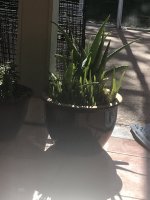saltybluegrass
Well-Known Member
i search this forum and can’t find anyone using an Aloe Foilar spray-
I’ve spent the last 2 days researching this amazing plant that has disease/insect/ medicine for plants as well as packed full of aminos/sugars/food.
My question is to use fermented or not.
The kenyan farmer produced a fermented fertilizer he sells to his customers.
Another board like this says to use it within 15 minutes of cutting.
Does anyone use it and how?
Along with researching my plants use , i am going to start my own tea for my use. It is amazing.
Ironically as i lean into growing and learning , my cousin gave me a plant last year and it’s so ready for service
I’ve spent the last 2 days researching this amazing plant that has disease/insect/ medicine for plants as well as packed full of aminos/sugars/food.
My question is to use fermented or not.
The kenyan farmer produced a fermented fertilizer he sells to his customers.
Another board like this says to use it within 15 minutes of cutting.
Does anyone use it and how?
Along with researching my plants use , i am going to start my own tea for my use. It is amazing.
Ironically as i lean into growing and learning , my cousin gave me a plant last year and it’s so ready for service




